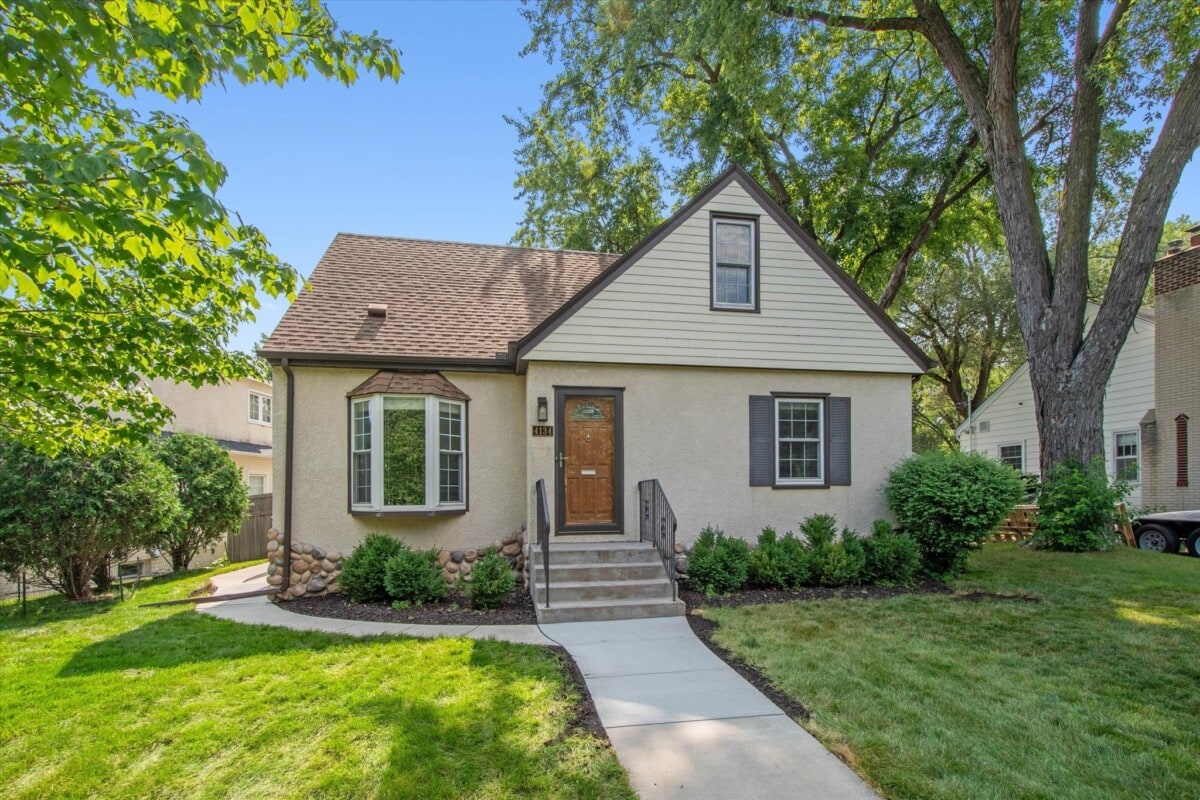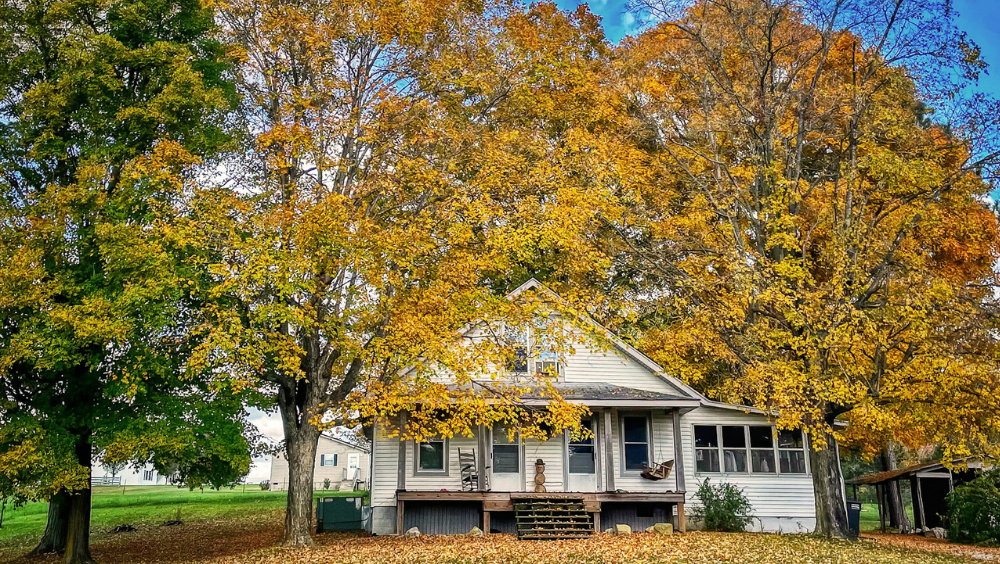Whether you’re buying a home or already own, certain inspections aren’t just helpful — they might be required. A 4-point inspection is one of those necessary check-ins if you’re applying for homeowners insurance or renewing your policy. But what is a 4-point inspection?
Unlike a standard home inspection, a 4-point inspection zeroes in on four key systems in your home: the roof, electrical, plumbing, and HVAC. Insurance companies use the 4-point inspection to establish any potential risks before issuing or renewing a homeowners policy.
While older homes usually carry the most risk to insurance companies, even newer dwellings are likely to go through the 4-point inspection process at some point. Whether your house is in Fort Lauderdale, FL or Kansas City, MO, here’s what to expect with this type of inspection.
What is a 4-point inspection?
A 4-point inspection does exactly what it sounds like—it takes a close look at four key parts of your home: the roof, electrical, plumbing, and HVAC. Instead of thoroughly going through a house like a regular home inspection, the inspector briefly looks over these core home systems to check how old they are, whether they’re in good shape, and if there are any obvious safety issues.
Why do insurance companies require a 4-point inspection?
Insurance companies use 4-point inspections to protect themselves from underwriting risky properties.
Homes that are at least 20-30 years old will almost always require a 4-point inspection as crucial functions of the home start to age. But even houses as new as four or five years old might need an inspection before a policy will be issued, as problems with major systems can lead to expensive claims down the line.
Florida is one state where 4-point inspections are usually required, no matter the age of the home. Severe weather conditions, like heat, hurricanes and flooding, can be hard on houses and condos in this area, making regular inspections crucial.
See More >> Redfin Home Insurance Survey Report 2024
By requesting a 4-point inspection from buyers and homeowners, insurers can determine whether to offer a policy, deny coverage, or ask for repairs before beginning or continuing coverage.
What does a 4-point inspection cover?
When a licensed inspector performs a 4-point inspection, they take a close look at these key parts of your home:
- Roof: Inspectors will look at the age, material, condition, and any visible damage. A leaking or deteriorating roof is one of the biggest red flags for insurers.
- Electrical: Outdated or unsafe wiring, like knob-and-tube or aluminum wiring, might be flagged as a fire hazard.
- Plumbing: Leaks, corrosion, and pipe material are all evaluated during a 4-point inspection. High-risk materials like polybutylene (PB) pipes can lead to denied coverage.
- HVAC: The heating, ventilation, and air conditioning should be in working order. A lack of central heating could be disqualifying in some regions.
Cosmetic issues aren’t the concern here—this inspection is all about making sure a home is safe and without major liability risks.
4-point inspection vs. home inspection
While both a 4-point inspection and a standard home inspection use a licensed inspector to look at your house, each inspection serves a distinct purpose—and the inspections aren’t necessarily interchangeable.
From the cost range to who needs it completed, these are the key differences between each type of inspection.
| 4-Point Inspection | Full Home Inspection | |
| Purpose | Insurance eligibility assessment | Buyer due diligence during home purchase |
| Required By | Insurance companies, typically for older homes or homes in higher-risk areas. | Not required, but highly recommended for homebuyers. |
| Scope | Focuses primarily on four areas of the home: the roof, plumbing, electrical, and HVAC | An in-depth analysis of the entire home: structure, systems, exterior, health and safety concerns, etc. |
| Time to Complete | Typically 30–60 minutes | 2–4 hours or more depending on size and complexity of home |
| Cost Range | $50–$175 (paid by buyer or homeowner) | $300–$500+ (usually paid by the buyer, but sometimes the seller) |
| Report Use | Helps determine insurance approval or conditions | Identifies potential repairs or issues to look out for and aids with price negotiations |
| Report Format | Usually a standardized insurer form | Detailed and multi-page document with photos and recommendations |
How to prepare for a 4-point inspection
If your insurance company asks for a 4-point inspection, there are different ways to prepare based on whether you’re purchasing your home or if your homeowners insurance is up for renewal.
If you’re buying a home
As a buyer, the 4-point inspection will usually happen after your offer is accepted and if your insurance provider requests it. It’s not as thorough as the full home inspection you may have already scheduled, but the 4-point inspection still matters if you’re financing the home and need insurance to close.
Make sure you’ve reviewed the seller’s disclosures and home inspection report ahead of time. If the roof is older, the electrical system is outdated, or the HVAC doesn’t work properly, those items could raise red flags for your insurer. Knowing these potential issues in advance gives you time to negotiate repairs or consider other options before applying for insurance.
See more >> What Fixes Are Mandatory After a Home Inspection?
If you already own your home
Maybe your current insurer asked for a 4-point inspection before renewing your policy, or you’re shopping for a better rate. Either way, walking through and looking at the key areas insurers look at ahead of time can help make sure there are no surprises that could affect your policy.
Inspect and repair your roof
Insurers will want to know your roof isn’t at risk of leaks or structural failure. Replace missing or cracked shingles, check for sagging or soft spots, and clean out gutters to prevent drainage issues. If your roof has been replaced in the last 10–15 years, have a copy of the receipt or contractor invoice to show proof.
Update or document your electrical system
Open your circuit breaker panel and make sure it’s easily accessible and clearly labeled. If your home still has older aluminum or knob-and-tube wiring, this could be a problem with your insurer. If you’ve upgraded the panel or rewired part of the home, gather permits or electrician invoices to show that the electric is safe and up to code.
Check plumbing for leaks or outdated materials
Look under sinks, around water heaters, and in crawlspaces for any signs of leaks or corrosion. Insurance companies can be picky about pipe materials, so it’s helpful to know what kind of pipes your home uses. If you’ve done any plumbing upgrades, have the documentation ready.
Service your HVAC system
Make sure your heating and cooling systems are working reliably and are well-maintained. Change filters, clear debris from vents or any outside units, and have service records on hand if your HVAC was recently repaired or replaced.
What happens if you don’t pass the 4-point inspection
While 4-point inspections don’t have a clear pass/fail, any issues found during the inspection can affect your ability to get or keep coverage. While you might not lose out completely on homeowners insurance with a concerning inspection report, your insurer might respond by:
- Denying coverage entirely: This is more likely if multiple issues are present or if the problems involve high-risk factors like an old roof or knob-and-tube wiring.
- Offering limited coverage: Some insurers might exclude certain systems, like the roof or plumbing, from your policy until repairs are made.
- Requiring repairs before approval: The insurer might present a conditional offer that hinges on addressing specific issues within a set time frame.
- Recommending a different type of policy: In some cases, you might be steered toward a surplus lines insurer or a high-risk plan with higher premiums and less protection.
If you’re denied coverage or presented with conditions you can’t meet, you still have options. Try getting a second opinion from a different inspector, completing the repairs, or shopping around for a more flexible insurance provider.
You don’t always need an inspection to get insurance
Not every home buyer or homeowner will be asked to get a 4-point inspection before securing homeowners insurance, but it’s becoming an increasingly common requirement, especially for older houses or homes in high risk areas.
The need for an inspection often depends on:
- The age of the home: Homes that are 20–30+ years old are more likely to require a 4-point inspection.
- The location of the home: Insurers in states like Florida, Louisiana, Texas, and California, where weather damage is more common, will almost always ask for an inspection.
- The insurer’s policies: Some companies require inspections for all new policies on older homes; others only ask when certain issues are found during underwriting.
- The condition of the home: Even newer homes may trigger an inspection requirement if there is visible wear, previous claims, or incomplete maintenance.
Whether you’re buying a home or renewing your homeowners insurance, it’s smart to be prepared for a 4-point inspection. Understanding what it covers (and why insurers might ask for one) can help you make informed decisions about your coverage—and keep your home running smoothly and safely.



















 English (US) ·
English (US) ·